Security
Appropriate event security measures can help to ensure the safety and well-being of attendees, staff, and other participants.
Security requirements differ depending on the scale and type of event. It can be helpful to undertake a risk assessment to ascertain what is required to maintain a safe environment, whilst remaining aware of your attendees’ rights and privacy.
Security personnel are often the first point of contact attendees have at your event, so it is important to carefully select your security provider. Knowing your audience is also important to ensure that appropriate personnel numbers, levels and types of surveillance, and defined parameters for the use of physical force by security staff are put in place.
Tips:
Preliminary risk assessment
Conduct a thorough risk assessment to identify potential security threats and vulnerabilities:
- Consider factors such as your events location, size, activities involved, estimated attendance numbers and the type of attendees you are expecting.
- Create an accurate site map and use it as a key reference document in your security risk assessment. Clearly mark all entry and exit points defining what they will be used for and determine the required level of security oversight for each.
- Divide your event site into zones with defined usage and access parameters. Consider the measures necessary to enforce the boundaries of these zones.
- Ensure maximum capacities, crowd density, transit corridors, fire regulations and emergency evacuation procedures are considered.
- Determine whether your event requires a surveillance camera system for live monitoring or recording.
Security protocols
Establish a set of security protocols that align with the findings of your preliminary risk assessment:
- Who is allowed to go where? Event accreditation such as wristbands or lanyards are great tools to group and identify participants with different levels of access – ensure they are difficult to forge or replicate!
- How many attendees are allowed in each zone of your site at once and how will you control this? Effective crowd management is important to ensure the safety of your attendees.
- If alcohol is present at your event, ensure policies around intoxication and host responsibility are clearly communicated to all staff.
- Clearly define the parameters of the use of physical force in dealing with unruly or violent attendees or agitators. Ensure event security staff know what kind of incidents require police notification or involvement.
- Establish a ‘flow of care’ document to guide the process of managing any incidents requiring medical attention.
- Hold a pre-event security briefing to ensure all parties understand the security measures and protocols in place.
Security personnel
- Determine the number of security personnel to hire based on the size and type of your event, ensuring a proper ratio of security personnel to attendees.
- Ensure your security personnel have a clear chain of command, with appropriate levels of experience and capability throughout the chain.
- Police vetting of staff should be standard practise to ensure they are suitable for the role.
- Security personnel should be trained and proficient in crowd management, conflict resolution, emergency response and first aid.
- Easily identifiable uniforms or attire are important as visibility is a key factor in effective crowd control and prevention of adverse incidents.
Communications
- Radio is an efficient communication method in an event setting. In-ear monitors with attached lapel microphones are handy additions to regular radio handpieces.
- Assign specific radio channels to appropriate groupings of staff, security, and emergency services to allow clear communications without unnecessary interruption.
- Radio communications are easy to intercept, therefore any sensitive information should be relayed through a secure method.
- Clearly defined roles and lines of communication help to streamline communications between event and venue staff, security, first aid responders and emergency services.
- Test and monitor all relevant channels before your event to ensure they operate without interference.
Surveillance
Surveillance camera systems are useful for both live monitoring of your event and recording any incidents that may require review.
- Determine strategic locations for surveillance cameras throughout the event area considering both indoor and outdoor spaces. These could include entrances, exits, main thoroughfares, high-traffic areas, and points of interest.
- Determine the camera types you require based on your event's needs. These may include fixed cameras for consistent monitoring, pan-tilt-zoom (PTZ) cameras for flexible coverage, and specialised cameras for low-light or outdoor environments.
- Trained personnel should monitor the camera feeds in real-time from a central control room or designated monitoring area to allow for immediate response to any suspicious or concerning activities.
- Cameras should record footage for review and analysis. Implement a storage solution, whether in the cloud or on local servers, that enables storage of the amount of footage you are likely to capture over the duration of your event, and at the resolution you require.
- Ensure surveillance cameras respect attendees' privacy rights. Clearly communicate the presence of cameras to attendees and avoid placing cameras in private areas such as restrooms or changing rooms.
- Protect the surveillance system from cyber threats by implementing strong access controls, regular software updates, and encryption of camera feeds and stored data.
Emergency response
- Ensure your security staff have a clear line of communication with Police, Fire Service and Ambulance teams.
- Clearly communicate your emergency response plan to all security staff to ensure they can guide event participants if it is enacted. Learn more in our Emergency Management section.
Event security plan
Develop an event security plan that outlines the details and parameters of the overall security plan in a clear and concise manner.
- Ensure this document is distributed to security, venue and key event staff so all parties are aware of the protocols in place.
- Use this document as the basis for your pre-event briefing and post-event evaluation and be prepared to add to or change it as necessary to adapt to any developments.
Post-event feedback
- After the event, gather feedback from security personnel to assess the effectiveness of security measures and identify areas of improvement for future events.
- Create and distribute a report from these findings to help with development of future security plans and to ensure any issues are understood and addressed by the relevant parties.
Cyber security
- If your event involves online ticketing or registration systems, ensure cyber security measures are in place to protect attendees' personal information.
- Limit the collection of personal data to what is essential for event registration and management.
- Communicate your event's privacy policy to attendees, detailing how their data will be used, stored, and protected.
- Establish a clear policy for retaining attendee data and delete it once it's no longer needed.
- Use reputable and secure payment gateways to process transactions securely.
- Use encrypted communication channels for sensitive event-related discussions and information sharing.
- Assess the cyber security practices of third-party vendors and partners who provide event-related services or software.
- Train event staff and volunteers about cyber security best practices, including avoiding suspicious links, using strong passwords, and reporting potential security threats.
Useful Links:
- New Zealand Police | Vetting service
- New Zealand Police | Protecting crowded places from attack
- Red Badge Group | Specialists in guarding, patrols and monitoring services
- First Security | Experts in manned security services
- Allied Security | NZ's Security Experts
- Aotea Security | Southland
- South Pacific Security | VIP & Event Security
Have you considered?
- What level of security presence does your event require?
- What are the key security vulnerabilities of your event?
- Are there any cyber security considerations regarding attendee data for your event?

